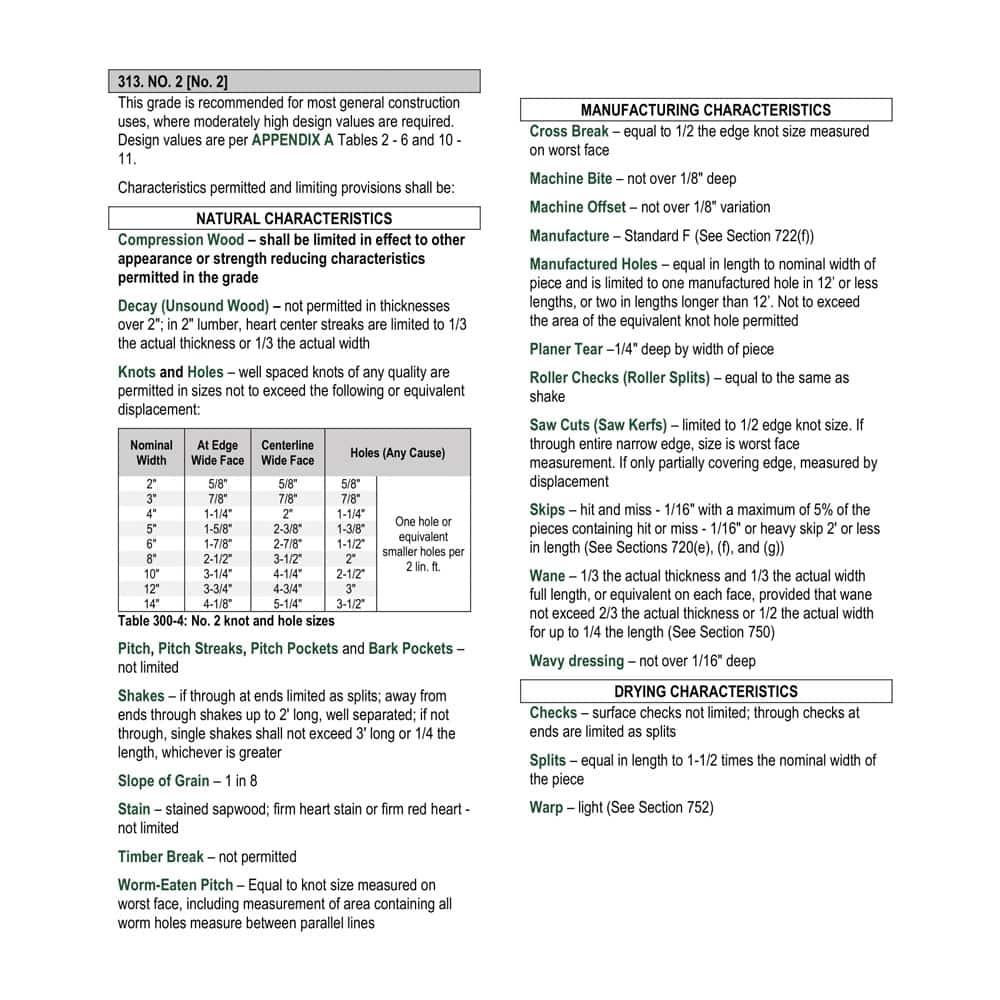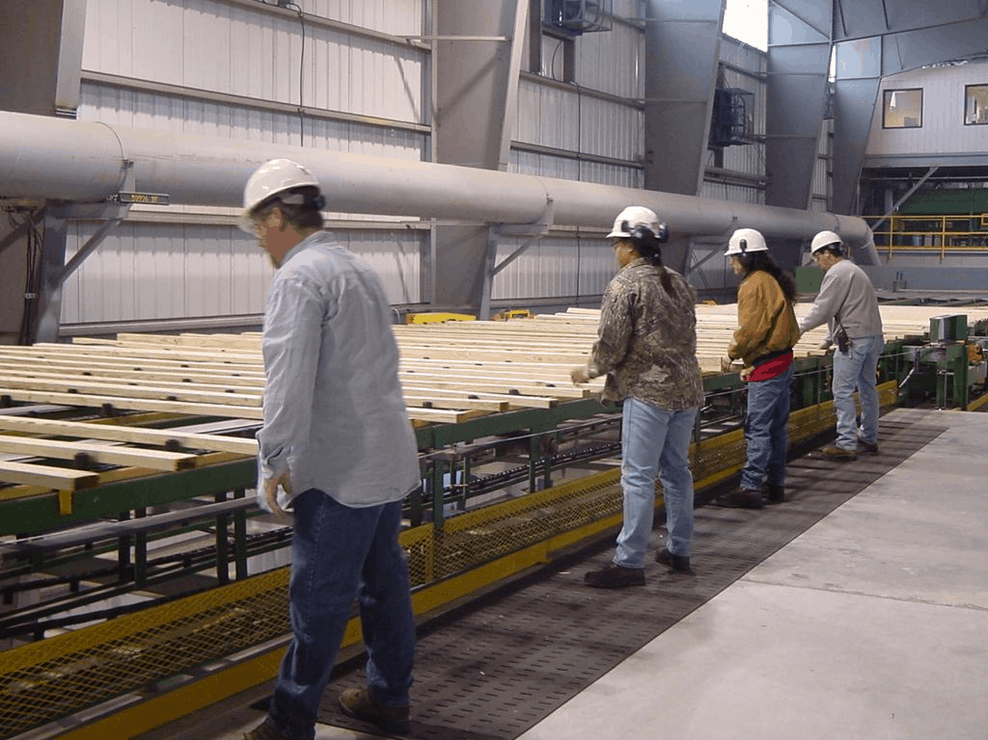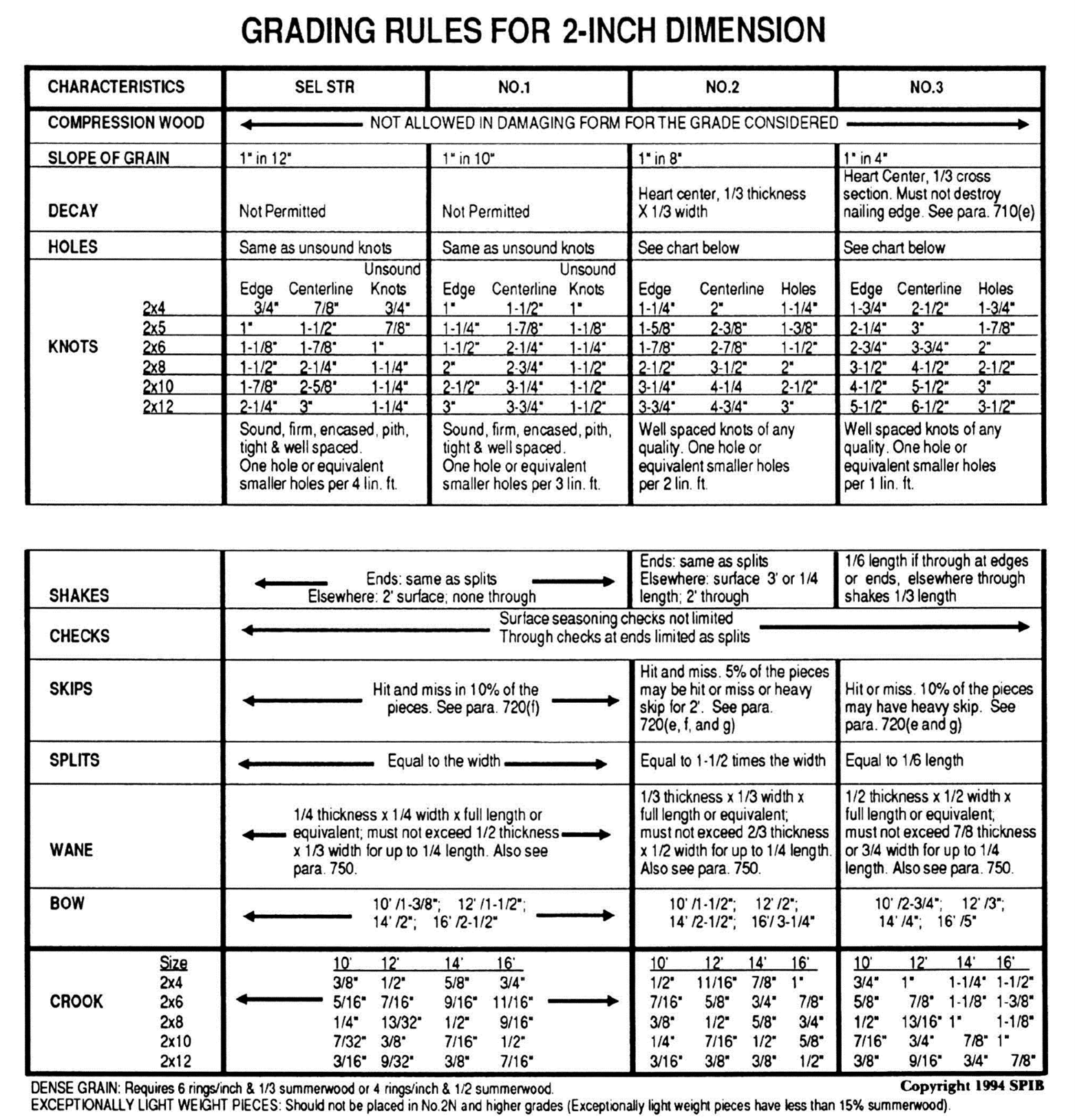
Wood Structure Design Basics—Lumber Grading
This series of articles, Wood Structure Design Basics, is intended to serve truss designers (TDs) and others who are new to the wood construction industry and/or may not have the opportunity to study the basics of wood design in a formal setting such as a university. The mix of basics will include an introduction to lumber grading and design properties, published design values and applicable adjustments to design values, how simple elements such as floor joists, rafters, columns, and wall columns are analyzed for maximum stresses and deflection, and how the design stresses are aligned with sizes and grades of available lumber so your selection will yield a design solution based on the provisions of the AWC National Design Specification® (NDS®) for Wood Construction. In addition, the design of connections made with nails, lag screws, and bolts will be demonstrated.
Lumber Characteristics
As a natural biological material, lumber is ideal for construction because it is both renewable and sustainable. While the “renewable” aspect is attractive, the “sustainable” part is as good as it gets. Learning about and using lumber to meet society’s needs is an ideal career path because the current level of public interest in sustainability and the environment is unprecedented.
Being a natural material derived from trees, solid-sawn lumber has characteristics that impact the lumber grade. Some of the characteristics are:
-
- Knots (especially edge knots)
- Slope of grain (which can severely impact strength)
- Density
- Wane
- Splits, shakes, checks
- Warp (twist, bow, crook, cup)
Of the characteristics listed, knots and slope of grain have the greatest impact on lumber strength. Wane (or absence of wood) has a minimal (or no) impact on strength, but it can interfere with the installation or use of the product, as shown in Figure 1.

Figure 1. In some applications, such as truss joints and nailing edges for roof sheathing, the presence of wane can reduce the structural capacity of the connections.
Lumber Grading
Lumber grading for dimension lumber is based on a National Grading Rule that specifies permitted characteristics for visual grades, regardless of species. Grading agencies accredited by the American Lumber Standard Committee (ALSC), such as the National Lumber Grades Authority (NLGA), the Pacific Lumber Inspection Bureau (PLIB), the Southern Pine Inspection Bureau (SPIB), and the Western Wood Products Association (WWPA), publish booklets of grading rules.
As an example of one lumber grade and species group, the grading rules for No.2 Southern Pine are shown in Figure 2. “Southern Pine” is a species group that includes four species—Loblolly Pine, Longleaf Pine, Shortleaf Pine, and Slash Pine. Readers can discover what species are included in a species group by reviewing the 2018 NDS Supplement, Tables 2.1 and 2.2 (visit https://awc.org/publications/2018-nds-supplement/).

Figure 2. Grading rules for No.2 Southern Pine (excerpted from the 2021 Standard Grading Rules for Southern Pine Lumber, SPIB®).
Lumber grading is complicated, requiring substantial training and skill. Even legendary wood truss engineer and lumber expert Professor Stan Suddarth would recount a story of his attendance at a week-long lumber grading course. On the fifth day, the participants went into the sawmill and attempted to grade lumber on a grading chain (as depicted in Figure 3). According to Stan, even after a full week of instruction, he definitely wasn’t ready to grade lumber.

Figure 3. Example grading line after the lumber has been sawn, dried, and surfaced (courtesy of SPIB®).
To determine the grade of a single piece of lumber, 2×4 or wider, the lumber grader must apply the tables published by a grading agency. Lumber grading can be performed by a highly trained human grader or through a computer program that uses a variety of scanners, photos, and lasers to apply the “visual grading rules.” The accuracy of these machines is regularly monitored by mill quality control personnel and by random visits from the grading agency, just like the accuracy of human graders is monitored. See Figure 4 for an example of 2-inch dimension lumber grading rules published by SPIB.
“Mechanically graded lumber” is another category of lumber. To produce “Machine Stress Rated Lumber” (MSR) or “Machine Evaluated Lumber” (MEL), a producing mill uses a stiffness measurement of each board in addition to the visual grading rules to assign an MSR or MEL lumber grade.

Figure 4. A summary of grading rules for 2-inch dimension lumber from SPIB (https://www.spib.org/docs/2dimension_eng.pdf).
Concluding Remarks
Lumber has a rich history in our lives, providing a natural resource for homebuilding as well as multi-family, commercial, and institutional applications. Lumber is used in “stick framing” and in structural building components such as trusses. In fact, the use of lumber continues to expand as additional lumber products are gaining acceptance. The most recent edition of the International Building Code (2021) accommodates the use of lumber in the form of “mass timber” up to 18 stories (https://www.woodworks.org/wp-content/uploads/wood_solution_paper-TALL-WOOD.pdf). Now is a great time to be interested in wood as a sustainable construction material, lumber, trusses, engineered wood products, mass timber, and related structural design methods.
The next article in this series will present the methods of lumber grading, how to read a grade stamp, and how allowable design stresses have been derived from tests of full-size lumber. If you have any questions about this series, please let us know.

Frank Woeste, P.E., is Professor Emeritus, Virginia Tech, and a wood construction consultant. Frank, along with his colleagues, has developed and presented continuing education programs for more than 30 years. He is a member of the ANSI/TPI 1 Project Committee for revision of the truss design standard and the AWC Wood Design Standards Committee and serves as the Consumer Representative (Alternate) of the ALSC. Comments are welcome and can be sent to fwoeste@vt.edu.
 Linda Brown has served as the engineer for the Southern Pine Inspection Bureau for over twenty years. Her primary responsibilities include SPIB’s continuing Resource Monitoring Program and the Mechanically Graded Lumber Program. She is active in ASTM as the Section Chair for D07.02.01 Solid Sawn Lumber and serves as an advisory member on the American Wood Council’s various standards committees.
Linda Brown has served as the engineer for the Southern Pine Inspection Bureau for over twenty years. Her primary responsibilities include SPIB’s continuing Resource Monitoring Program and the Mechanically Graded Lumber Program. She is active in ASTM as the Section Chair for D07.02.01 Solid Sawn Lumber and serves as an advisory member on the American Wood Council’s various standards committees.
